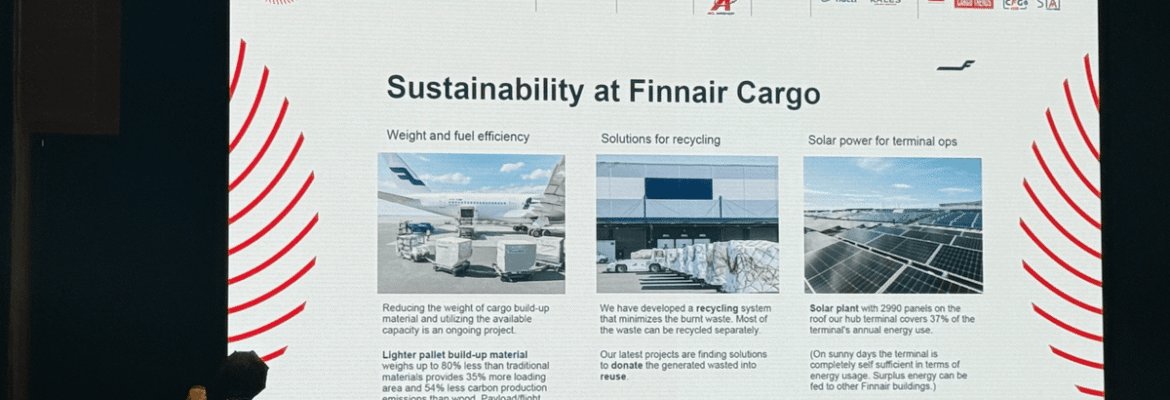SAF: charging Finnaiir Targets for the most powerful flight
At the Caspian Air Cargo Summit 2025 summit, Anna Maria Kirchner, Head of Global Sales at Finnair Cargo, explained how Nordic Carrier deals with a sustainability challenge, with a sharp focus on sustainable aviation fuel (SAF) as a more influential tool for the sector today.
Net-Zero depends on SAF
Kirchner noted that the flight path to Net-Zero by 2050 is inseparable from the adoption of SAF. She said: “If we continue our net net goals for 2050, IATA has calculated that we will need 65 percent of SAF to feed it on the plane.”
Despite this, progress remains limited. In 2024, only 1.3 million liters of SAF were purchased by the European Union airlines – which reaches only 0.3 percent of global consumption. With the European Union now canceling a 2 % SAF mix, Kirchner stressed that the scaling of production and absorption is very important to ensure that airlines can meet their climatic obligations.
Finnair estimates that 75 percent of the Net-Zero track will depend on SAF alternatives and emerging alternatives such as electricity, with a balance of new technologies such as an electric trip and hydrogen as soon as they are commercially viable.
A pioneer in new fuel with liquid sun
In August 2025, Finnaiir took a step further than the traditional Saf with a partnership on Sing Sun, an electrical project that uses solar energy to divide water into hydrogen, which is then converted into renewable fuel.
“Part of the Finnaiir strategy is the preparation for the transformation of energy. We have made a partnership with ABB, Fortum and Finavia to produce ESAF, which gives us a great advantage as a substitute or additional to SAF,” Kirchner explained.
Although she is still at an early stage, she highlighted that every gradual step is important. She said: “This has just started now in August. It will be what we get out of it a lot, but we always say every step that concerns the journey of sustainability,” she said.
Beyond fuel: operational innovation
While SAF dominates the long -term carbon removal discussion, Kirchner also drew attention to the practical measures carried out by the company, the company, which has already carried out its operations.
Experiments are conducted using lightweight cardboard platforms, developed by Finnish Company ElteteWhich ranges from 50 to 100 kilograms of traditional wooden platforms. These low emissions, low costs, and the ability to reuse on long trips such as those to Seoul.
In line with the principles of the circular economy in Finland, Finnaiir has also developed a recycling program for official uniforms, and converted old clothes into new struggles. In goods operations, waste ducts are redirected so that an indelible fish is now being donated from Helsinki cool to the Helsinki Zoo as an animal bait.
Sun supported stations
Another noticeable step is the installation of 2990 solar panels at the Finnaiir Cargo Center on the latest model in Helsinki, which was opened in 2018. These panels were generated 37 percent of the annual electricity needs of the facility, with the surplus of energy in food and airport offices during the long days of the summer of the blankets.
Kirchner said that although these efforts may seem modest compared to the flying climate challenge scale, it explains how to add additional work. “Rome has not been built in one day – and the flying will not be sustainable,” I noticed.
Teaching and cooperation
Kirchner emphasized that cooperation through the flight value chain is vital, especially when it comes to unifying reporting emissions and demands. Finnaiir has made a partnership with NSTE, its headquarters in Finland and one of the world’s leading producers in the world, to create educational programs for recovery and trucks.
She said: “We hear a lot about reporting. How are emissions calculated?
For Kirchner, the most important message is credibility: the industry must “walk modern”. By investing in SAF, new fuel test, and including the circular economy that considers daily charging, the Finnaiir Cargo puts itself in a position in aviation sustainability.
She concluded that “the most important thing is to think about what we can do to ensure that the planet where we live will be something with the goal of Net-Zero for the year 2050.”
